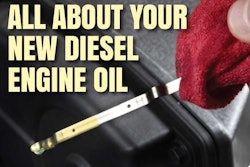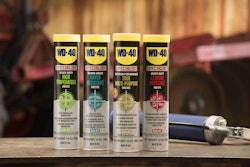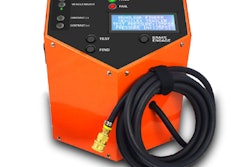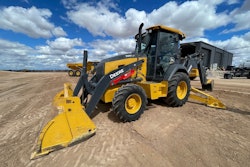New diesel engine oils categories CK-4 and FA-4 have been on shelves just more than three months and the market has begun to shift toward its new normal.
Formerly lumped together under the umbrella of PC-11, CK-4 and FA-4 formulations replaced CJ-4 oils and as of Dec. 1 and following a late-Fall soft rollout, all engine oil manufacturers began shipping the new oils.
“Supply and demand [for CK-4] has matched our expectations,” says Tony Negri, commercial products manager for Phillips 66. “Even though this was a fairly straight-forward upgrade of CJ-4, enough criteria changed that it spawned one of the broadest education campaigns that I’ve witnessed.”
The American Petroleum Institute (API) says it has licensed approximately 400 CK-4 and more than 60 FA-4 oils submitted by large, medium, and small oil marketers.
Len Badal, global Delo brand manager for Chevron Lubricants, says the company has already fully transitioned its bulk shipments to customers and marketers for Delo 400 XLE SAE 10W-30 and SAE 15W-40 and is slowly upgrading customers from Delo 400 LE SAE 15W-40 to the new Delo 400 SDE SAE 15W-40.
“At this point, new API CK-4 and FA-4 products are moving into the market for most of the main suppliers,” he says, “but it has been taking time for the products to show up for end customers and even marketers or retail channels as the previous generation API CJ-4 products are run down or moved out of inventory.”
Shell Lubricants introduced its Rotella CK-4 oils last Fall as CJ-4 oils because they met both the new and old specifications. Dan Arcy, Global OEM technical manager for Shell Lubricants says ever since then, the transition to the new diesel engine oils has gone very smoothly for customers with no reported problems.
While the official launch of the new categories was late 2016, some products have yet to hit the marketplace.
Chevron plans to roll out its Delo 400 XSP SAE 5W-30 and 5W-40 (both API CK-4) full synthetic products this spring, and plans a full transition from the current API CJ-4 full synthetic versions through the rest of the year.
For the 2017 engine lineups, some OEMs are also offering their own engine oil formulations. Both Volvo and Mack each improved their factory fill blends for use in the new engines. Additionally, Volvo’s VDS-4.5 and Mack’s EOS-4.5, the company’s say, exceed the new API specification CK-4.
“There is a misconception that Mack Engine Oil EOS-4.5 is simply a rebranded version of the other engine oils on the shelf, and nothing could be further from the truth,” says Scott Barraclough, Mack technology product manager. “Mack Engine Oil EOS-4.5 is a proprietary formula that is tested and approved with Mack equipment, which allows us to extend drain intervals.”
Their extended drain intervals, both companies say, allow fleets to skip between four and 16 oil drains – depending on duty cycle – compared to prior maintenance schedule.
“In oil costs alone, that represents a savings of hundreds of dollars per year, even for the lightest duty cycles,” says John Moore, Volvo product marketing manager – powertrain.
To-date, only Detroit has approved FA-4 for use in its new engines, but other OEMs are still working through internal discussions on whether to adopt for factory-fill or maintain an approval for service fill use for a certain model, age or type of engine.
Badal says Chevron expects that evaluation process to continue to evolve slowly.
“No other OEMs have announced plans to move their factory-fill to high temperature/high sheer fluids (API FA-4) at this point,” Badal says, “but there is work by each of them to understand the benefits and durability of engines over the long term.”
As a result, Negri adds supply of FA-4 fluids exceeds demand at this early stage of the first-ever diesel engine oil category for fuel economy.
“As with many new technologies, early adopters are all-in to see how much improvement can be achieved while others take a wait-and-see approach,” he says.
Negri adds continuing education will be required before the majority of fleet operators reach a comfort level for the new category.
Badal agrees.
“Education and awareness are still at a low level for a lot of end users, technicians and maintenance personnel,” he says. “It still seems a lot of folks are unaware of the transition, or don’t see the benefits as compared to recent price increase announcements for these products.”












